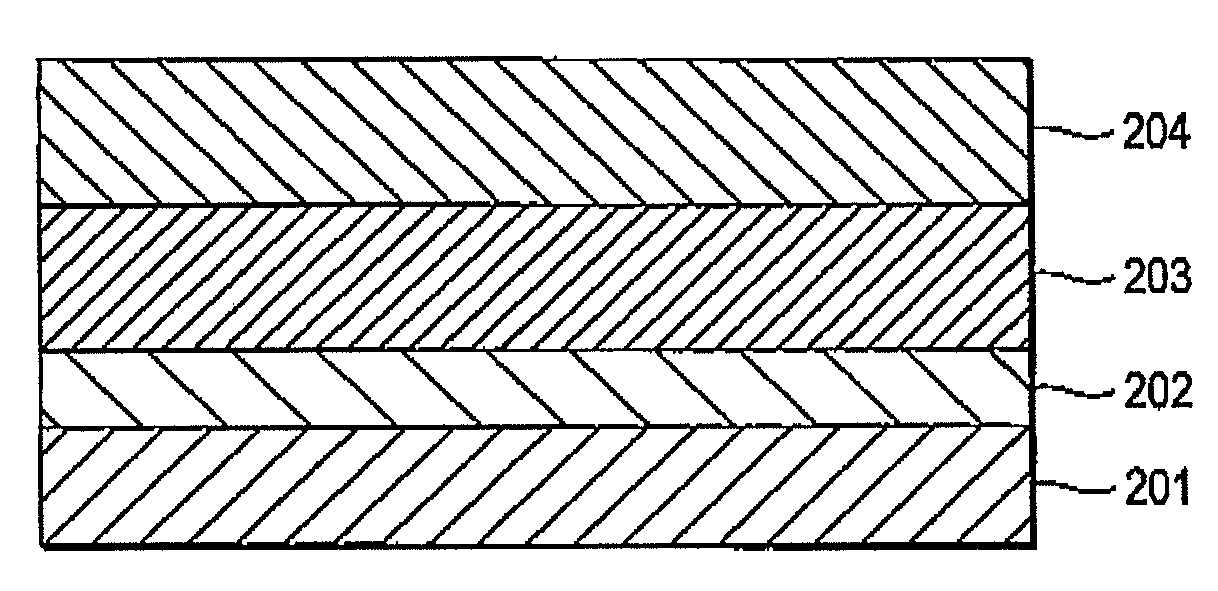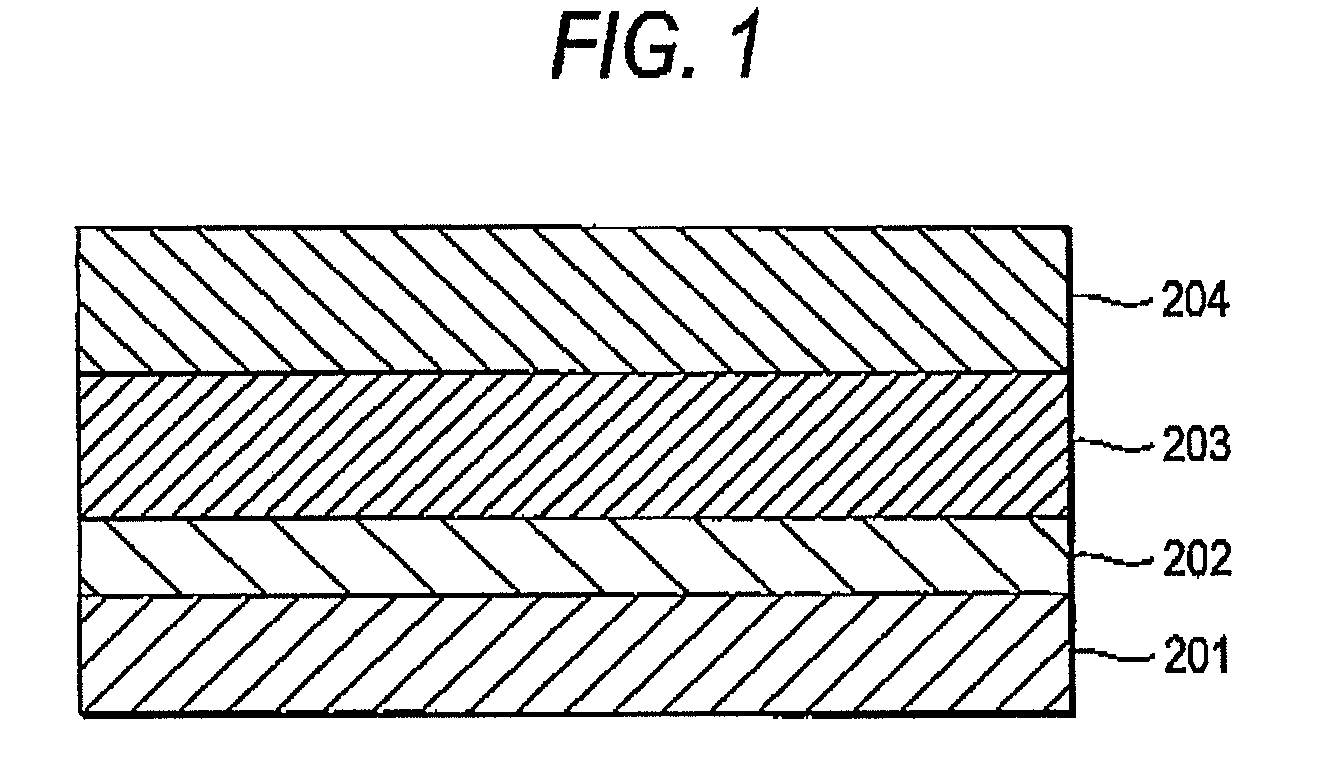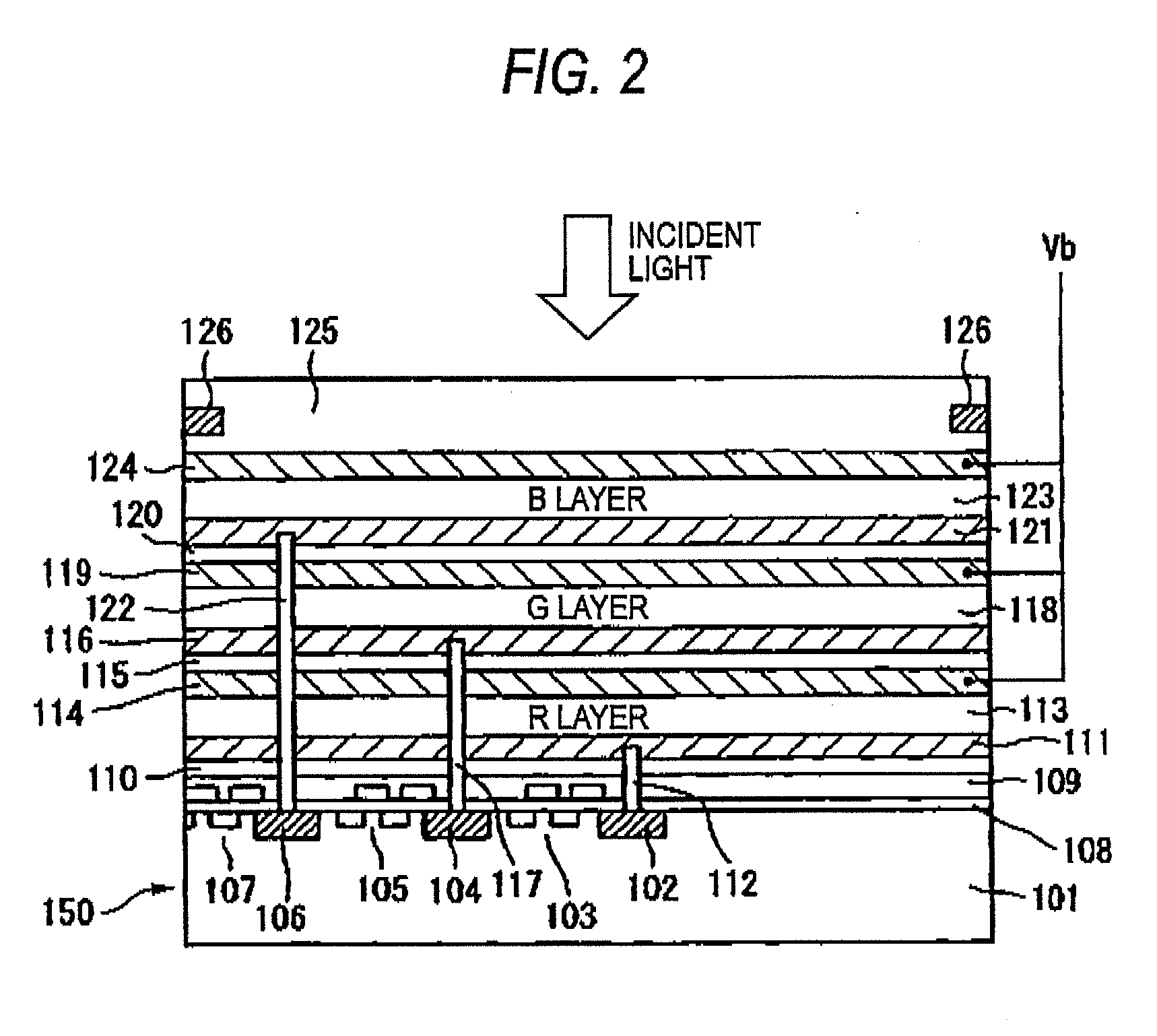Photoelectric conversion device, imaging device and photosensor
a conversion device and imaging device technology, applied in the direction of photometry using electric radiation detectors, optical radiation measurement, instruments, etc., can solve the problems of reducing the aperture ratio and the light collection efficiency, untransmitted light, and poor light utilization efficiency, so as to achieve high photoelectric conversion efficiency and high speed responsivity
- Summary
- Abstract
- Description
- Claims
- Application Information
AI Technical Summary
Benefits of technology
Problems solved by technology
Method used
Image
Examples
example 1
[0198]Amorphous ITO of 100 nm was formed by sputtering on a cleaned glass substrate and patterned by photolithography to produce a pixel electrode while allowing one pixel to be present every each electrode. Thereon, compound A of 100 m and Organic Dye Compound MS-1 of 100 mm and further thereon, silicon oxide of 40 nm each was formed by vacuum heating vapor deposition to produce a photoelectric conversion layer. Furthermore, as the upper electrode, amorphous ITO of 5 nm was formed by sputtering to produce a transparent electrode, whereby a solid-state imaging device was produced (Device 1).
example 2
[0199]A solid-state imaging device (Device 2) was produced thoroughly in the same manner except that in Example 1, Organic Dye Compound (MS-2) of the present invention was used in place of Organic Dye Compound (MS-1) of the present invention.
example 3
[0205]A cleaned ITO (glass) substrate was placed in a vapor deposition apparatus, Organic Dye Compound (MS-3) was vapor-deposited to a thickness of 200 nm, a patterned mask (a mask giving a light-receiving area of 2 mm×2 mm) was provided on the organic thin layer, and aluminum was vapor-deposited to a thickness of 100 nm, whereby a photoelectric conversion device was produced (device 3).
PUM
 Login to View More
Login to View More Abstract
Description
Claims
Application Information
 Login to View More
Login to View More - R&D
- Intellectual Property
- Life Sciences
- Materials
- Tech Scout
- Unparalleled Data Quality
- Higher Quality Content
- 60% Fewer Hallucinations
Browse by: Latest US Patents, China's latest patents, Technical Efficacy Thesaurus, Application Domain, Technology Topic, Popular Technical Reports.
© 2025 PatSnap. All rights reserved.Legal|Privacy policy|Modern Slavery Act Transparency Statement|Sitemap|About US| Contact US: help@patsnap.com



